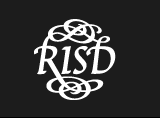Loading...
Presentation Type
Recorded Presentation Video
Event Website
https://naturelab.risd.edu/events/recap-the-regeneration-a-virtual-series/
Start Date
22-10-2020 12:00 PM
End Date
22-10-2020 1:15 PM
Description
October 22nd hosted the kickoff conversation of the Regeneration series with Astrobiofuturist and biomimicry expert Billy Almon, who shared how biomimicry can create restorative futures for black and brown communities. This line of thought began while he worked in the field and learned that a man had been shot in his grandmother's backyard; the police thought that the man had a gun when he actually had a cellphone. This changed the direction of Billy’s research, where he asked himself, “if biomimicry can't help my community, then what's the point?” During his talk, he emphasized the importance of exploring the narrative and how this investigative process can help change the monolithic story of police violence. This led him to study different animals’ reactions to perceived threats and where similar responses occur in the human body.
“What’s the actual biology taking place in these instances of police shootings?” Billy asked. He challenged us to look at this violence through a broader lens and understand the “historical, socioeconomic, and biological history of these occurrences.” What is the officer and the person at the other end of the barrel experiencing physiologically in this heightened state of stress and perceived threat? How can understanding this, together with knowing the historical existence of the police and the propagandized fear of "other", lead to biomimetic solutions that can help reduce violence against communities of color?
In thinking about regeneration, Billy encouraged designers and artists to observe patterns in both nature and human behavior in order to “discover new narratives that will help realize our ideal future.” He explained that in order to bring humanity closer to a better tomorrow, we need to focus on “restorative futures,” which he defines as “rehumanizing people, places, and systems through empathetic designs informed by biology and nature.”
Regeneration with Billy Almon
October 22nd hosted the kickoff conversation of the Regeneration series with Astrobiofuturist and biomimicry expert Billy Almon, who shared how biomimicry can create restorative futures for black and brown communities. This line of thought began while he worked in the field and learned that a man had been shot in his grandmother's backyard; the police thought that the man had a gun when he actually had a cellphone. This changed the direction of Billy’s research, where he asked himself, “if biomimicry can't help my community, then what's the point?” During his talk, he emphasized the importance of exploring the narrative and how this investigative process can help change the monolithic story of police violence. This led him to study different animals’ reactions to perceived threats and where similar responses occur in the human body.
“What’s the actual biology taking place in these instances of police shootings?” Billy asked. He challenged us to look at this violence through a broader lens and understand the “historical, socioeconomic, and biological history of these occurrences.” What is the officer and the person at the other end of the barrel experiencing physiologically in this heightened state of stress and perceived threat? How can understanding this, together with knowing the historical existence of the police and the propagandized fear of "other", lead to biomimetic solutions that can help reduce violence against communities of color?
In thinking about regeneration, Billy encouraged designers and artists to observe patterns in both nature and human behavior in order to “discover new narratives that will help realize our ideal future.” He explained that in order to bring humanity closer to a better tomorrow, we need to focus on “restorative futures,” which he defines as “rehumanizing people, places, and systems through empathetic designs informed by biology and nature.”
https://digitalcommons.risd.edu/naturelab_regeneration/conversations/videos/1
